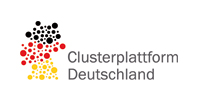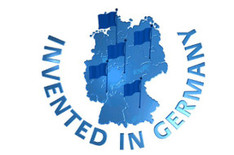Cool Silicon e. V.
Innovation through energy efficiency
In the Chemnitz-Freiberg-Dresden region, more than 100 cluster partners are working together on the development of energy-efficient information and communications technologies (ICT), thereby creating the foundations for a digital society. The players from universities, research institutes and companies such as Globalfoundries, Infineon, X-Fab and Zentrum Mikroelektronik Dresden have actively contributed to the region’s development into one of the leading microelectronics locations in Europe.
Climate protection through innovative Solutions
The scientists in the Leading-Edge Cluster have already developed numerous innovative solutions in the three subject areas micro-/nanotechnologies, communications technologies and sensor networks which, for example, significantly reduce energy requirements in fast mobile networks such as LTE. Growing digitisation consumes about eight per cent of globally generated electrical energy – and in tomorrow’s digital society the data throughput will multiply even further. To save energy, energy efficiency in the key ICT industry must be increased enormously. This can be achieved with continuous miniaturisation and materials innovations to improve functionality.
Tailored solutions
The Micro-/Nanotechnology work group pursues new system approaches for energy-efficient ICT products and their use in computers. The “Cool Computing” project shows how, using the new High-k-Metal-Gate technology, high-performance processors can be manufactured which increase the lifespan of a laptop or smartphone by 30 per cent.
Energy-self-sufficient systems
The “Sensor Networks” work group has developed energy-self-sufficient and wirelessly networked sensor systems to control and monitor various processes in different application areas. The “Cool SensorNet” project provides sensors that can be used in aircraft construction or wind power plants. The small sensors perform major tasks, monitoring structure and reporting wear and tear on an energy-self-sufficient basis. This opens up new opportunities for the construction of light, low-consumption aircraft made of carbon-fiber composites.
Cluster alliance
The Leading-Edge Cluster Cool Silicon was the starting point for the European cluster alliance “Silicon Europe – The Leaders for Innovative Electronics,” with which Europe’s leading microelectronics locations such as Silicon Saxony, the Netherlands, France, Belgium and Austria intend to strengthen the position of Europe in micro- and nanoelectronics as well as in ICT.
Digital society
“The energy-efficient IT solutions developed during the promotion period in Saxony’s Leading-Edge Cluster Cool Silicon are not only key technologies for microelectronics, but also form the basis for the maintenance of a strong, traditional manufacturing industry in Germany. Microchips are everywhere today – in computers and telephones, as well as in cars, traffic systems and medical technology,” says Cluster Coordinator Prof. Dr Thomas Mikolajick.
More information
- Recommend this page:
- Print view

